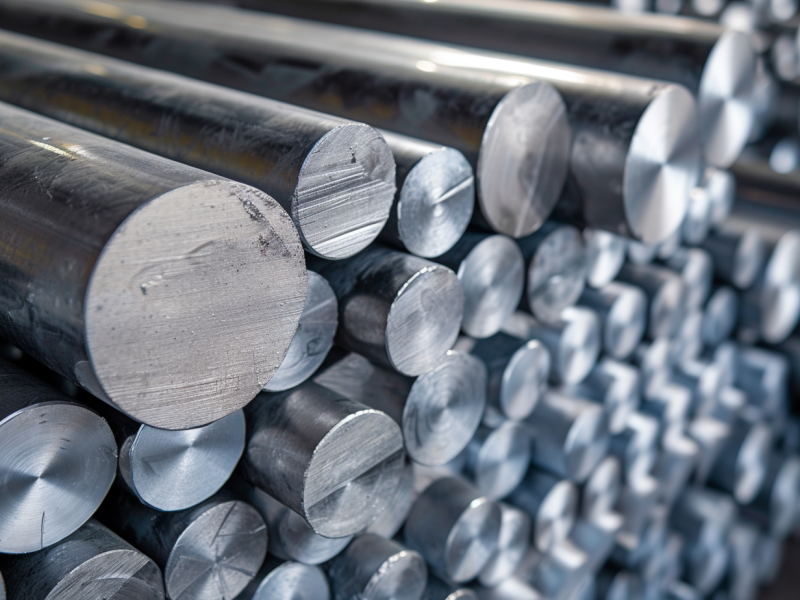
Introduction
Scandium, a rare earth metal, plays a pivotal role in modern material science, despite its relative obscurity in the periodic table. Discovered in 1879 by Lars Fredrik Nilson, scandium has since been a subject of fascination due to its impressive ability to enhance the properties of metals when alloyed, even in minute amounts. Its rarity and the difficulty of extraction have made scandium an expensive but highly sought-after element for high-performance alloys.
What Makes Scandium Alloys Special?
Scandium alloys are celebrated for their unmatched strength, durability, and resistance to corrosion. The addition of scandium to metals like aluminum, titanium, or zirconium results in materials that defy traditional limitations, offering new possibilities in engineering and design. These alloys are characterized by their lightweight and high strength, making them indispensable in industries where performance and efficiency are paramount.
3 Types of Scandium Alloys
Scandium-Aluminum Alloys (Sc-Al)
Scandium-aluminum alloys are a cornerstone in the realm of advanced materials, offering an impressive blend of lightweight properties and exceptional strength. The addition of scandium to aluminum not only enhances the alloy’s strength but also significantly improves its weldability and resistance to grain refinement, which are critical factors in manufacturing processes.

Advanced Applications: Sc-Al alloys have found their niche in the aerospace industry, where every gram of weight reduction can lead to significant fuel savings and performance improvements. These alloys are used in the construction of aircraft structures, such as fuselage components, wing panels, and other critical parts that benefit from reduced weight without compromising on strength or durability. In the sporting world, Sc-Al alloys enable the production of high-performance equipment. For example, high-end bicycle frames made from these alloys offer unmatched strength-to-weight ratios, providing competitive cyclists with lighter and faster bikes.
Innovations and Developments: Recent advancements in alloy processing techniques have enabled the creation of Sc-Al alloys with even finer microstructures, leading to materials with superior mechanical properties. Researchers are continuously exploring new ways to optimize scandium content in aluminum alloys to achieve the best balance between performance and cost. Additionally, the development of new casting and forging techniques has allowed for more complex and lightweight designs, pushing the boundaries of what can be achieved with Sc-Al alloys.
Scandium-Titanium Alloys (Sc-Ti)
The combination of scandium with titanium results in alloys that are incredibly strong, lightweight, and resistant to high temperatures. Sc-Ti alloys excel in applications where materials are subjected to extreme conditions, such as high-speed aerospace and defense platforms.
Specialized Uses: In aerospace engineering, Sc-Ti alloys are utilized in the production of engine components and airframes that require materials capable of withstanding high temperatures and stresses. The defense sector also benefits from the unique properties of Sc-Ti alloys, using them in the construction of armored vehicles and advanced weaponry systems, where strength, durability, and weight reduction are paramount.
Technological Breakthroughs: The integration of Sc-Ti alloys in additive manufacturing (3D printing) has opened new avenues for the production of complex geometric components that were previously impossible or too costly to manufacture. This technology allows for the direct fabrication of parts with intricate designs, reducing waste and enabling the customization of components for specific applications. Moreover, ongoing research into the refinement of Sc-Ti alloy compositions is enhancing their performance, making them even more appealing for cutting-edge applications.
Scandium-Zirconium Alloys (Sc-Zr)
Scandium-zirconium alloys are known for their exceptional corrosion resistance and stability at high temperatures, making them ideal for use in harsh environmental conditions. These alloys are particularly suited for applications in the chemical processing industry and nuclear reactors, where materials must endure corrosive substances and maintain integrity under thermal stress.
Critical Applications: Sc-Zr alloys play a crucial role in the energy sector, particularly in nuclear reactors, where they are used in fuel rods and other structural components that require materials with high resistance to radiation damage and thermal creep. In the chemical industry, these alloys are employed in the construction of reaction vessels and piping systems, offering superior resistance to chemical attack and extending the lifespan of these installations.
Progress and Potential: The ongoing development of Sc-Zr alloys focuses on enhancing their corrosion resistance and mechanical properties through alloying and heat treatment processes. Researchers are also investigating the environmental impact of these alloys, aiming to improve their recyclability and reduce the ecological footprint associated with their production and use.
Here’s a table summarizing the key aspects of the three types of scandium alloys discussed:
| Alloy Type | Key Properties | Primary Applications | Innovations |
|---|---|---|---|
| Scandium-Aluminum (Sc-Al) | Lightweight, Exceptional Strength, Enhanced Weldability, Grain Refinement | Aerospace Components, Automotive Parts, Sporting Equipment | Optimized Scandium Content, Advanced Casting/Forging Techniques |
| Scandium-Titanium (Sc-Ti) | Strong, Lightweight, High Temperature Resistance | Engine Components, Airframes, Defense Systems | Additive Manufacturing, Enhanced Performance through Composition Refinement |
| Scandium-Zirconium (Sc-Zr) | Exceptional Corrosion Resistance, Stability at High Temperatures | Chemical Processing, Nuclear Reactors | Improved Corrosion Resistance and Mechanical Properties, Environmental Impact Studies |
This table encapsulates the distinct characteristics, applications, and recent innovations associated with each scandium alloy type, providing a concise overview of their significance and potential in various industries.
Conclusion
The exploration of scandium alloys—Sc-Al, Sc-Ti, and Sc-Zr—reveals a world of possibilities for advancing material science and engineering applications. Each alloy type brings a unique set of properties to the table, addressing specific challenges and enabling innovations across various industries. As research and technology continue to evolve, the potential for scandium alloys to contribute to more efficient, durable, and high-performance solutions appears boundless, promising a future where these advanced materials play a pivotal role in driving technological progress.
To inquire about high-quality scandium alloys, please contact us.
